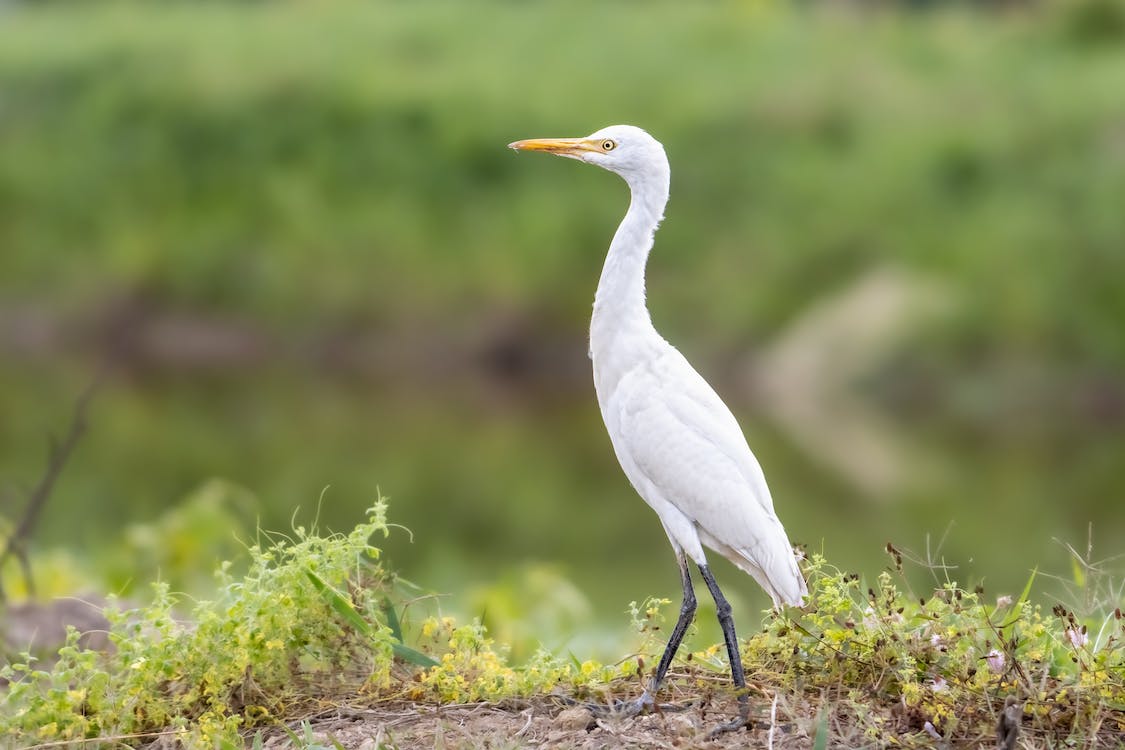It is a small, stocky white egret with a rotund yellow bill. Legs are black during the non-breeding season, which turns red or yellow in the breeding period. These birds are often seen in the dry land, following tractors, and especially cattle on fields, in which it gots its name. It has a wide range, occurring in Europe, Asia, America, Australia, and Africa.
Read further to know more about the Cattle Egret.
What is a Cattle Egret?
Cattle Egret is a heron species belonging to the family Ardeidae. It thrives in tropics, subtropics, and warm to temperate regions. While its plumage has a close resemblance to the genus Egretta, they are more closely related to the herons. Initially a native of Europe, Asia, and Europe, the species experienced a swift expansion in its range in the previous century and colonized many other parts of the world.
Its seven levels of classification are as follows:
Kingdom: Animalia
Phylum: Chordata
Class: Aves
Order: Pelecaniformes
Family: Ardeidae
Genus: Bubulcus
Species: B. ibis
Cattle Egret Physical Description
Cattle Egrets are relatively smaller than of their cousins under the same category. They grow 18 to 22 inches or 45 to 56 centimeters, weigh around 270 to 512 grams, with a wingspan of 35 to 38 inches or 88 to 96 centimeters. Males are relatively larger than the females.
These birds have a short, bulky neck, sturdy yellow bill, and a hunched posture. In their non-breeding plumage, adults sport a mostly white plumage and grayish-yellow legs. During the breeding periods, adults develop orange to buff feathers on the back, crown, and breast. Meanwhile, the legs, irises, and bill turn bright red for a short period before the pairing. Juveniles and immature birds have a black bill and lack the colored plumage.
Where can they be spotted?
Cattle Egrets thrive in wetlands, grasslands, and woodlands. They also occur in pastures and croplands, with cattle and other livestock. Occasionally, they may scavenge for food at garbage dumps. The bird species has a wide range and can be found in Europe, Asia, America, Australia, and Africa.
Interesting Facts You Should Know About the Cattle Egret
Cattle Egrets usually forage during the day in dry fields, aggregating in flocks. They are often associated with grazing animals, such as cattle, horses, camels, zebras, deers, and even elephants. As these animals move, they flush insects from the grass, which these egrets then feed on. These birds may also follow lawnmowers and tractors, which creates the same results. These food items are included in their diet, crickets, grasshoppers, flies. In certain parts of its range, they may also eat frogs, moths, lizards, grasshoppers, earthworms, fish, crayfish, nestlings, and eggs.
These birds share their roosting colony with other waterbirds. They wander vastly, and sometimes it can be hard to distinguish whether they are dispersing or migrating. Cattle Egrets often fly in flocks from between roosting, breeding, and foraging sites.
Breeding season varies greatly depending on the range. They are seasonally monogamous birds, mating only once a year, and the pair only last until the end of the nesting period. The males collect sticks while the females construct the nest in a shrub or a tree.
A clutch of 3-4 eggs is laid, which both sexes will incubate for about 24 days. Both parents feed the broods through regurgitation. One of the pairs is left in the nest during the first few days of the chicks after hatching. Broods will soon lurk around the nest after three weeks and will fledge at four weeks. At about 6 to 7 weeks of age, the juveniles are fully independent, capable of flying long distances.
Cattle Egrets has a wide range, and their population size appears to be increasing. They are currently evaluated as Least Concern (LC) under the IUCN Red List of Threatened Species.
WILDLIFE PARKS AND RESERVES WHERE THIS SPECIES IS FOUND:
BOTSWANA
SOUTH AFRICA
Kalahari Gemsbok National Park
NAMIBIA
ZAMBIA
ZIMBABWE
BOTSWANA BIRDS | SOUTH AFRICA BIRDS
NAMIBIA BIRDS | ZAMBIA BIRDS | ZIMBABWE BIRDS

